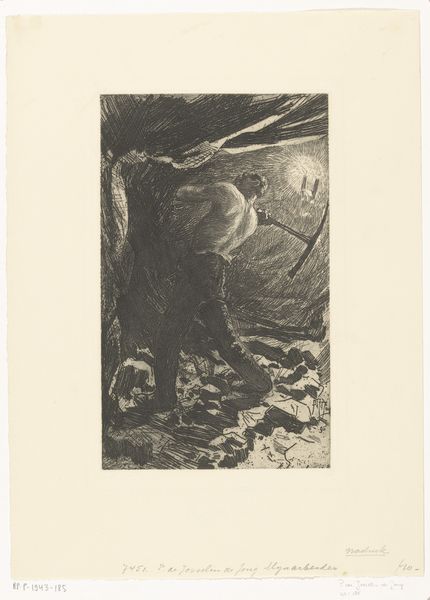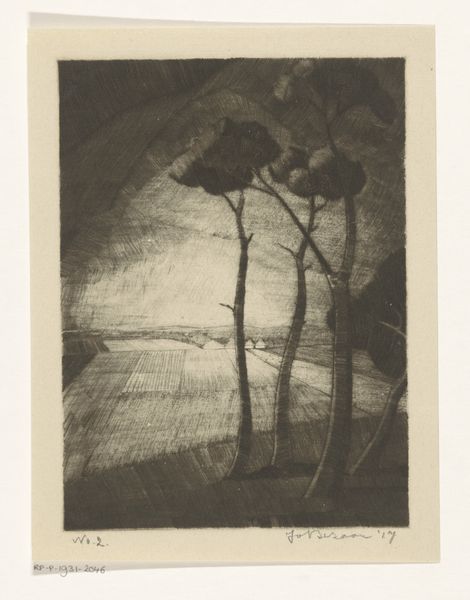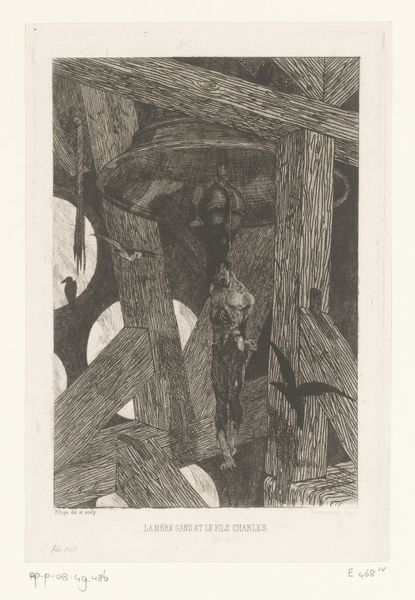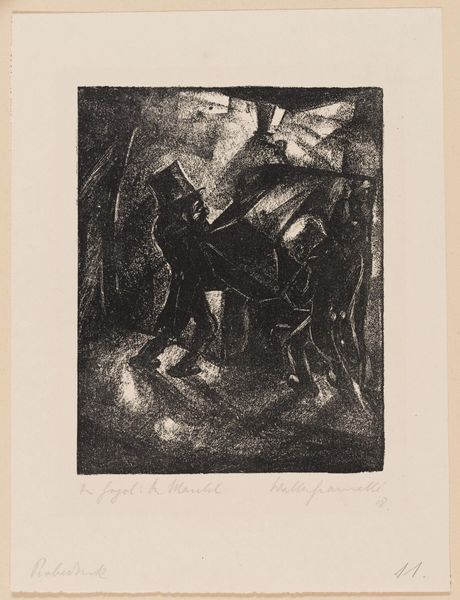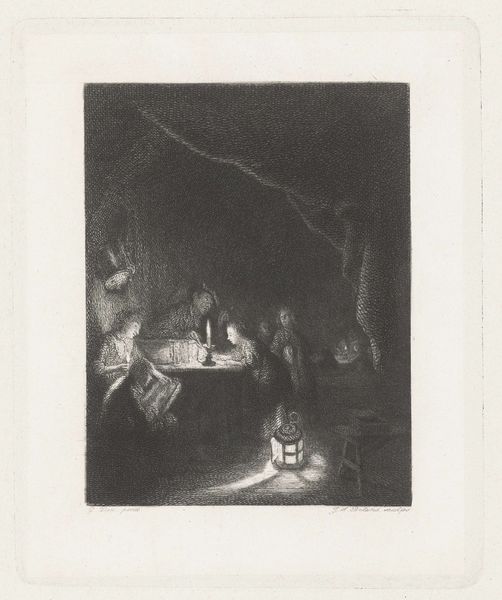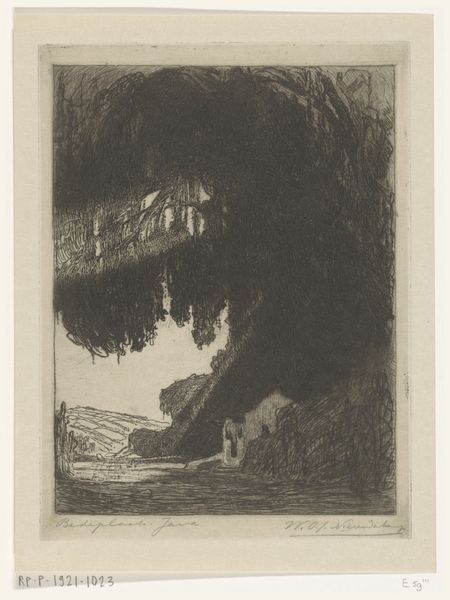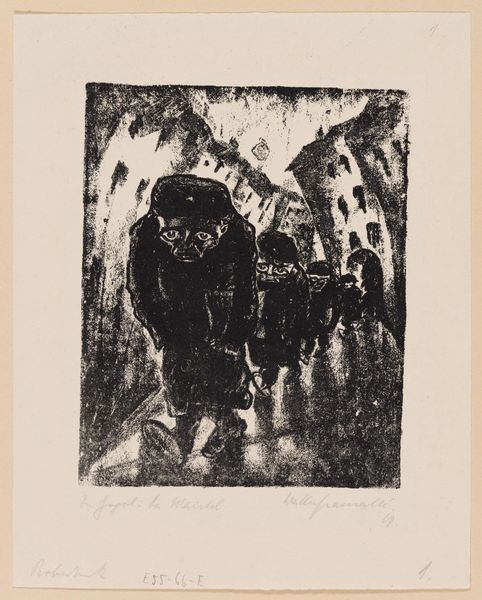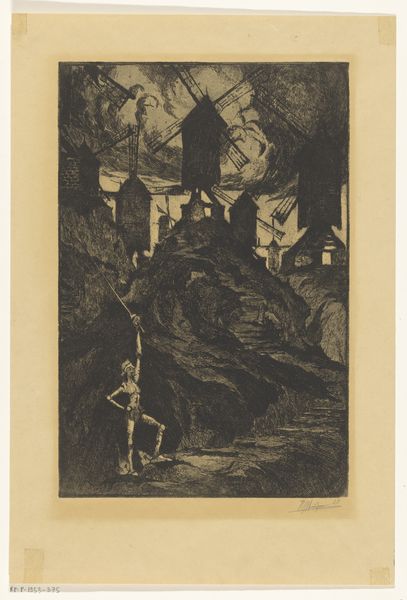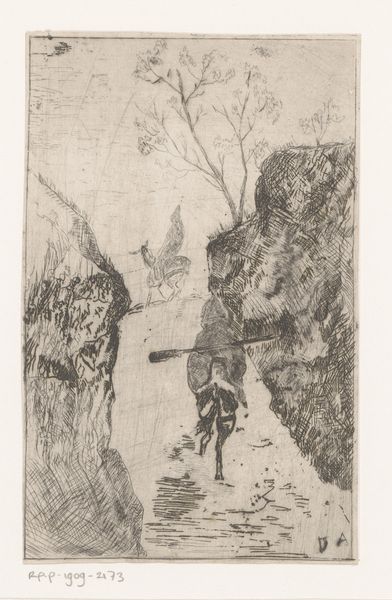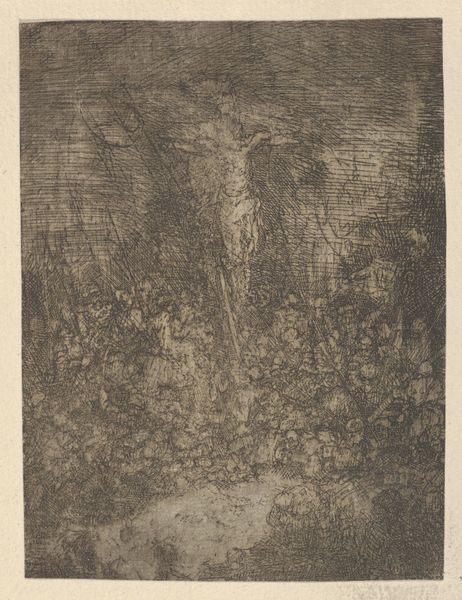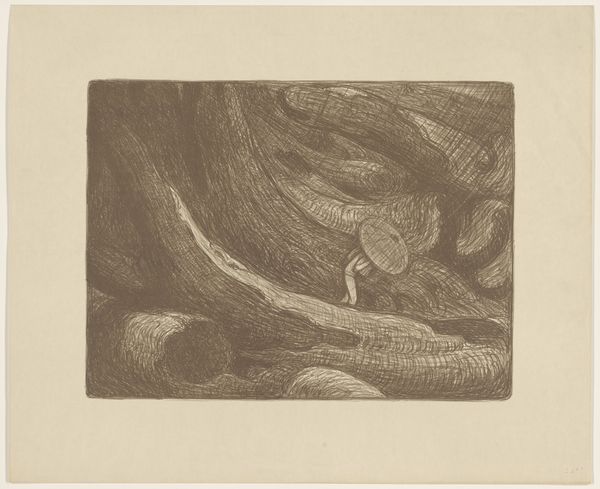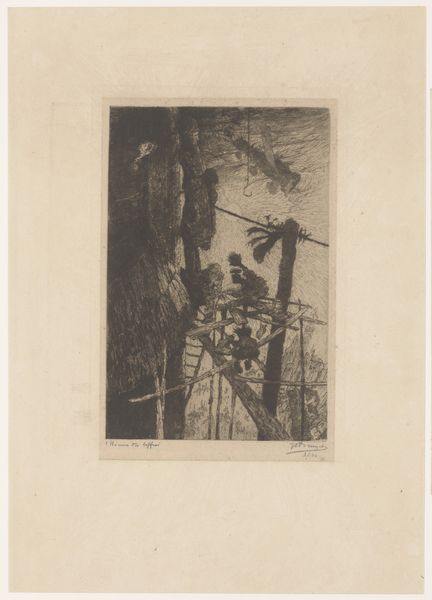
print, etching, fumage
#
portrait
#
pencil drawn
# print
#
etching
#
old engraving style
#
fumage
#
genre-painting
#
history-painting
#
realism
#
monochrome
Dimensions: height 258 mm, width 158 mm
Copyright: Rijks Museum: Open Domain
Curator: Pieter de Josselin de Jong created this etching, entitled "Mijnarbeider met bloot bovenlijf" – "Mine worker with bare torso" – around 1895. It's part of the Rijksmuseum's collection. The artist used the etching technique on paper. It's incredibly evocative, isn't it? Editor: Woah, claustrophobia central! It’s stark and heavy, all grays and blacks, but that single light source really draws the eye. You feel like you're peering into some hidden, oppressive world. Curator: The dramatic chiaroscuro really underscores the themes of labor and hardship, typical of genre painting. The almost heroic representation of the worker also places it within the artistic exploration of social realism and, possibly, the burgeoning worker’s movement then gaining momentum. Notice the posture. Editor: Right? Shoulders hunched, muscles straining… You can practically feel the weight of the pickaxe and the dampness of the mine. He's literally wrestling something out of the earth. Almost biblical in the struggle, really. It's both intimate and impersonal. Curator: Yes! Consider, also, the psychological weight of his bare torso: is it intended to show the miner's physical strength, or vulnerability? Or is the near-darkness designed to communicate the constant threats that were part of that world and time? It reminds one of the stoic images of labour from, say, Courbet, yet imbued with its own stark vision of 19th-century labour. Editor: It feels like an old photograph bleached by time, whispering secrets. Makes you wonder about all the invisible hands that built our world. Sort of like that feeling you get when wandering old castles or factories - ghosts of human endeavor swirling around. Curator: Precisely. Through his artistry, de Josselin de Jong invites us to meditate on the human cost of industry, power, and survival. Editor: It really leaves a lingering ache. The kind you feel in your bones, long after you've moved on to the next artwork. A memory dug up from the depths, really.
Comments
No comments
Be the first to comment and join the conversation on the ultimate creative platform.
